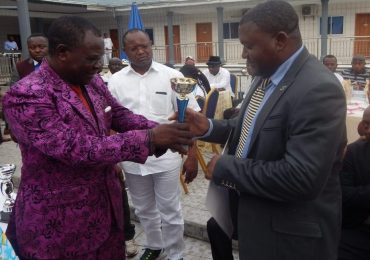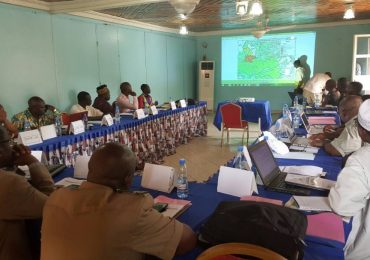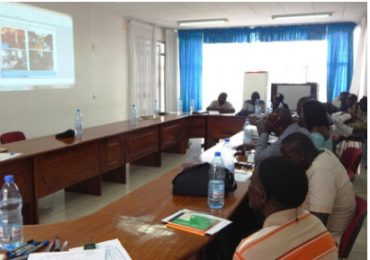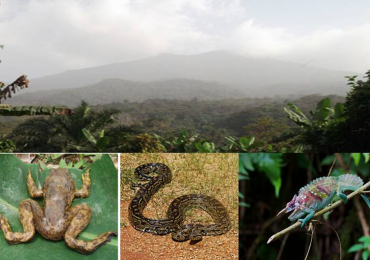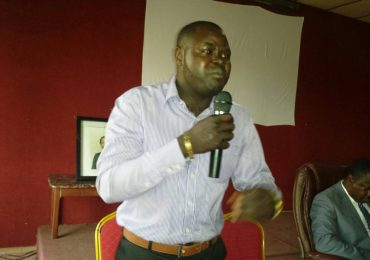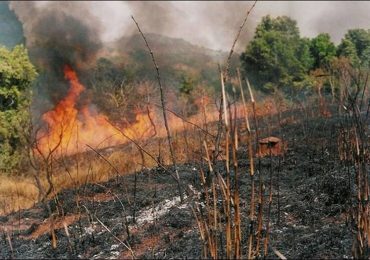More Reactive than Proactive?
Last Friday August 4, 2017, the people of Essoh-Attah in the Lebialem Division, Southwest Cameroon were going by their daily activities when they observed the ‘earth moving’ accompanied by a flood. The flood made its way down to Abuebue, destroying houses along the way, burying Chief Fuakalem and consuming part of the Nursery school of Abuebue. In a bid to demonstrate his efforts at salvaging the plight of victims, the Senior Divisional Officer of Lebialem created a subdivisional committee, which visited the site for evaluation. Meanwhile a delegation from the Ministry of Territorial Administration and Decentralization visited the disaster area last August 22, 2018 for further investigations.Though great steps, critics hold that such a move is rather reactive than pro-active. This is so because government re-afforestation programmes that would have restored the degraded landscape preventing or limiting such a disaster neglected this area.
On the same August 4, 2017, while the people of Essoh-Attah were lamenting, streams and rivers in neighbouring Wabane Sub-division overflowed their banks sweeping away bridges and collapsing schools and houses. This flood came barely a few weeks after the 14th anniversary of the historic Wabane landslide, which killed 20, displacing over 3000 and destroying livestock, farmlands and other valuable possessions. Fourteen years after the Wabane Landslide, the Cameroon government has provided social amenities like a High School, a Primary School, and a health center to Magha-Bamumbu, the affected community.The road has however, remained a real nightmare despite several hundreds of millions francs that have been allocated for road construction/rehabilitation.
As far as the restoration of this landscape to prevent any further disaster is concerned, some interventions have been made but no aggressive efforts have been made by the government at this level. Apart from some trees that were planted at the Bamboutus flank of the mountain in 2007 through the Ministry of Forestry and Wildlife’s National Reforestation Programme, no direct efforts have been recorded by the government as far as tree planting along this fragile ecosystem is concerned.
In a chat with the Mayor of Wabane, Mr. Israel Nembo, recently, he recognized the fact that the re-afforestation of the landscape is the only way to prevent soil erosion, landslide and flood within this area. The mayor disclosed that his greatest set back is lack of funds to carry out reforestation programme as a greater chunk of the Council’s budget is diverted to road rehabilitation. He said the government promised assisting the Council in its drive to restore the landscape through tree planting some four years ago but nothing has happened.
This revelation from the mayor was especially shocking given that the government reportedly gave some FCFA 71million in 2015 for tree planting in the Southwest Region and increased it to FCFA 95milion in 2016. Where then did this great amount of money go to? What criteria did they follow to distribute this money such that councils in a disaster prone Division like Lebialem could not benefit?
It’s therefore clear from every indication that the plight of the degraded Mount Bamboutus Landscape, Wabane inclusive, has been left at the mercy of God and few NGOs. For example, the Environment and Rural Development Foundation, (ERuDeF) and ACREST seem to have been the only NGOs carrying out reforestation programmes within the fragile Mount Bamboutus Landscape since the 2003 landslide in Magha-Bamumbu. ERuDeF in the early 2000s carried out a survey on the plants, birds and wildlife of Mount Bamboutus. In 2005, the organisation, with support from the International Tree Foundation, reforested the Fomenji-Magha flank of the Mountain with over 1.000 trees. This was followed by another tree planting programme in 2013 with support from Mane Foundation and Lea Nature, which has seen the planting of over 25.000 trees still along the Fomenji-Magha flank of the Mountain.
With support from the UNDP GEF Small Grants Programme, Mane Foundation, Man & Nature and the French Embassy, ERuDeF has since 2012 been executing a pilot programme on the implementation of the Access and Benefit Sharing (ABS) Initiative in Cameroon under the auspices of the Ministry of Environment, Protection of Nature and Sustainable Development (MINEPDED).
On her part, ACREST with the support of IUCN is supporting a small scale reforestation scheme on a section of the mountain from the Bamboutous Division.
The efforts of the government and these NGOs are laudable but not aggressive enough to induce the rapid conservation and restoration needs of this emblematic Mountain and the entire Lebialem Division. It is thus incumbent on the government and other international NGOs to support these NGOs on the ground so that further natural disasters can be prevented instead of just waiting to react when it must have destroyed lives and properties.



